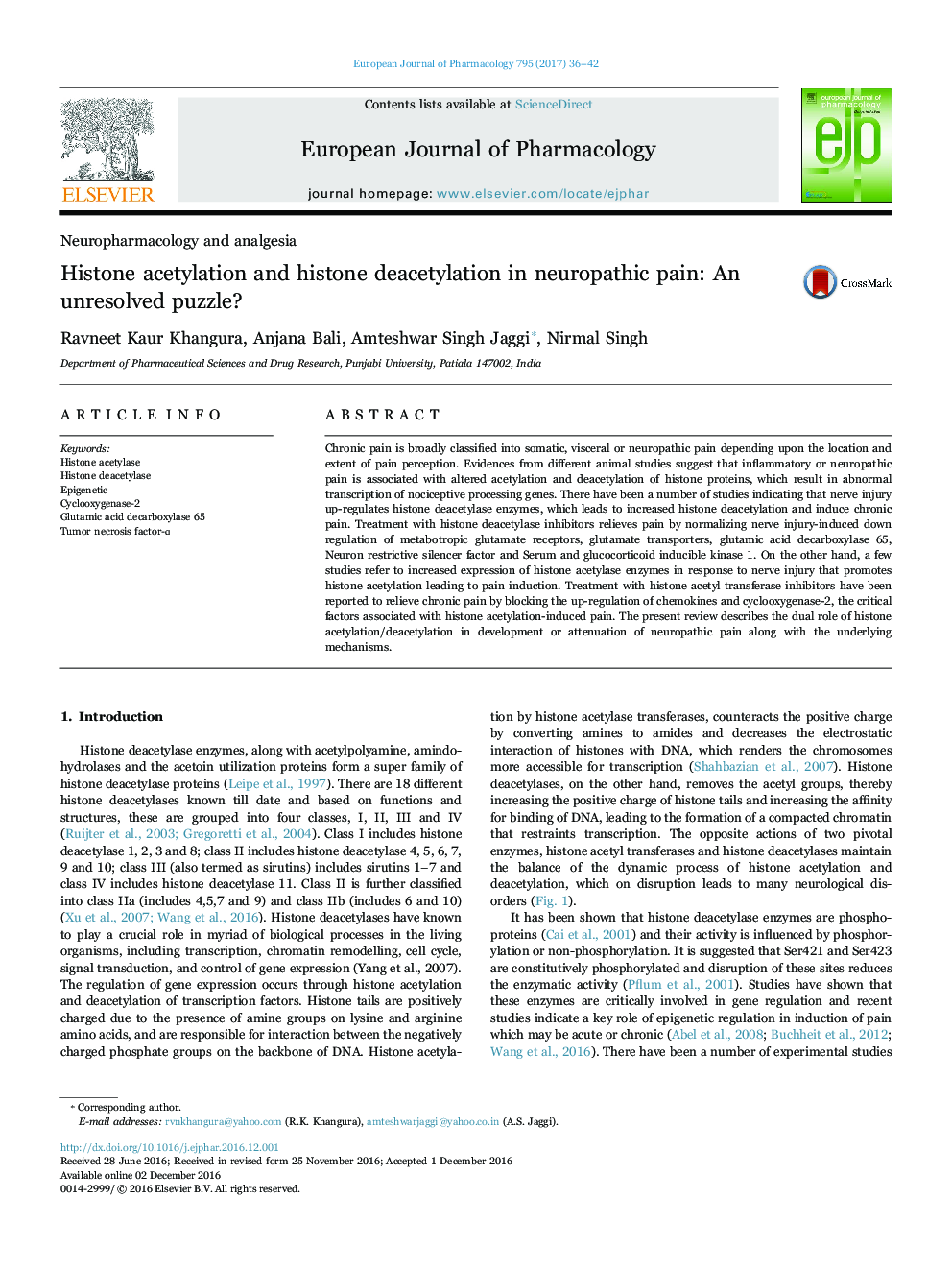| کد مقاله | کد نشریه | سال انتشار | مقاله انگلیسی | نسخه تمام متن |
|---|---|---|---|---|
| 5554745 | 1558885 | 2017 | 7 صفحه PDF | دانلود رایگان |
Chronic pain is broadly classified into somatic, visceral or neuropathic pain depending upon the location and extent of pain perception. Evidences from different animal studies suggest that inflammatory or neuropathic pain is associated with altered acetylation and deacetylation of histone proteins, which result in abnormal transcription of nociceptive processing genes. There have been a number of studies indicating that nerve injury up-regulates histone deacetylase enzymes, which leads to increased histone deacetylation and induce chronic pain. Treatment with histone deacetylase inhibitors relieves pain by normalizing nerve injury-induced down regulation of metabotropic glutamate receptors, glutamate transporters, glutamic acid decarboxylase 65, Neuron restrictive silencer factor and Serum and glucocorticoid inducible kinase 1. On the other hand, a few studies refer to increased expression of histone acetylase enzymes in response to nerve injury that promotes histone acetylation leading to pain induction. Treatment with histone acetyl transferase inhibitors have been reported to relieve chronic pain by blocking the up-regulation of chemokines and cyclooxygenase-2, the critical factors associated with histone acetylation-induced pain. The present review describes the dual role of histone acetylation/deacetylation in development or attenuation of neuropathic pain along with the underlying mechanisms.
Journal: European Journal of Pharmacology - Volume 795, 15 January 2017, Pages 36-42
